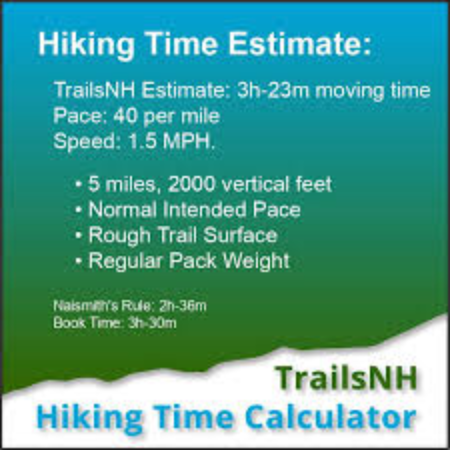
How Long Does It Take to Hike a Mile on Average?
Hiking is a fantastic way to connect with nature, challenge yourself physically, and enjoy breathtaking views. However, estimating the time it takes to hike a certain distance can be tricky, as several factors come into play. While there are no hard and fast rules, understanding the average hiking pace and the factors that can influence it can help you plan your hikes more effectively.
Average Hiking Pace
As a general rule of thumb, the average hiking pace falls between 20 minutes per mile and 60 minutes per mile. This wide range highlights the significance of individual fitness levels, terrain difficulty, and other variables that contribute to hiking speed.
Factors Affecting Hiking Pace
Several factors can influence your hiking pace, including:
1. Fitness Level and Experience
Your current fitness level and hiking experience play a crucial role in determining your pace. Seasoned hikers with excellent endurance and strength naturally maintain faster paces than beginners.
2. Elevation Gain
Hiking uphill requires more effort and significantly impacts your pace. As you ascend, your pace will likely slow down compared to hiking on flat or downhill terrain.
3. Trail Conditions
The condition of the trail significantly impacts your hiking speed. Well-maintained, even trails allow for faster paces compared to rugged, rocky, or slippery paths that demand caution and slow down progress.
4. Pack Weight
The weight of your backpack can significantly influence your hiking pace. Heavier packs require more exertion, leading to slower paces, especially during ascents.
5. Weather Conditions
Extreme weather, such as heat, humidity, rain, or snow, can impact hiking speed. Hot and humid weather can lead to fatigue and slower paces, while rain or snow can make trails slippery and difficult to navigate.
Estimating Hiking Time
While numerous factors can influence your hiking time, a commonly used guideline for estimating hiking time is Naismith's Rule:
- Naismith's Rule: Allow 5 kilometers (3 miles) per hour on the flat, plus an additional hour for every 600 meters (2,000 feet) of ascent.
Example: Let's say you're planning a 6-mile hike with 1,500 feet of elevation gain. According to Naismith's Rule:
- Flat Hiking Time: 6 miles / 3 miles per hour = 2 hours
- Ascent Time: 1,500 feet / 2,000 feet per hour = 0.75 hours (45 minutes)
- Total Estimated Time: 2 hours + 0.75 hours = 2.75 hours (approximately 2 hours and 45 minutes)
Hiking Pace Chart
Here's a table that provides a general idea of hiking paces based on different factors:
| Factor | Pace (minutes per mile) |
|---|---|
| Terrain | |
| Flat | 15-20 |
| Moderate Uphill | 25-35 |
| Steep Uphill | 35-60+ |
| Fitness Level | |
| Experienced Hiker | 15-25 |
| Average Hiker | 20-30 |
| Beginner Hiker | 25-40+ |
| Pack Weight | |
| Light Pack (<10 lbs) | 0-5 minutes slower |
| Moderate Pack (10-20 lbs) | 5-10 minutes slower |
| Heavy Pack (>20 lbs) | 10-20+ minutes slower |
Note: This table provides general estimates, and your actual hiking time may vary.
Tips for Estimating Hiking Time
- Consider Your Fitness Level: Be realistic about your current fitness level and hiking experience when estimating your pace.
- Factor in Breaks: Include time for breaks, rest stops, and enjoying the scenery in your overall hiking time.
- Check Trail Conditions: Inquire about trail conditions, such as elevation gain, terrain type, and recent weather, as they can impact your hiking pace.
- Start Slowly and Gradually Increase Pace: It's generally advisable to start your hike at a slower pace and gradually increase it as you warm up.
- Listen to Your Body: Pay attention to your body's signals and take breaks when needed.
FAQs
How long does it take to hike 10 miles?
Using the average hiking pace of 20-60 minutes per mile, it could take anywhere from 3 hours and 20 minutes to 10 hours to hike 10 miles. Keep in mind this is just an estimate; the actual time can vary significantly depending on the factors mentioned earlier.
How can I improve my hiking pace?
Improving your hiking pace takes time and effort. Focus on building your overall fitness through activities like hiking, running, and strength training. As you become fitter and more experienced, you'll naturally notice improvements in your hiking pace.
What should I pack for a hike?
Packing the right gear is essential for a safe and enjoyable hike. Essential items include:
- Navigation: Map, compass, GPS device
- Sun Protection: Sunscreen, sunglasses, hat
- Extra Clothing: Layers appropriate for changing weather conditions
- Illumination: Headlamp or flashlight
- First-Aid Supplies: First-aid kit tailored to hiking
- Fire Starter: Lighter, waterproof matches
- Tools: Knife or multi-tool
- Nutrition: Plenty of food and snacks
- Hydration: Water and water filtration or treatment method
Remember to pack light while ensuring you have the essential gear to stay safe and comfortable on the trail.